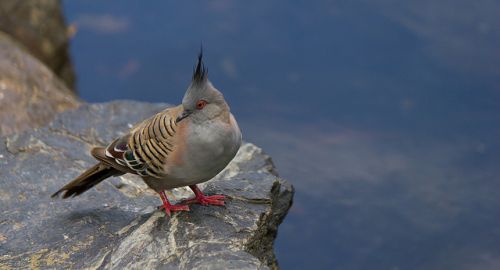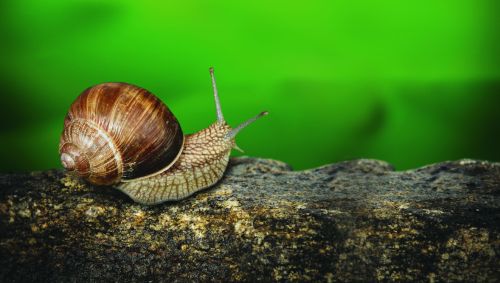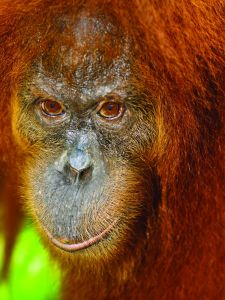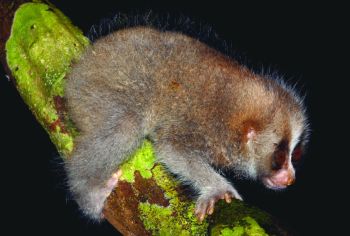Focus: creation news and views
Plans for ‘temple to atheism’
Earlier this year, philosopher/writer Alain de Botton announced plans to build a 46-metre (151 ft) tower in the City of London as a “temple for atheists”. Each centimetre of the tapering tower’s interior has been designed to represent a million years, and to illustrate the supposed “more than 300 million years of life on earth”. It will culminate in a narrow band of gold to denote “the relatively tiny amount of time humans have walked the planet.”
However, Alain de Botton has sought to distance himself from the more “aggressive” proponents of atheism. “Because of Richard Dawkins and Christopher Hitchens atheism has become known as a destructive force,” he says, hoping that his proposed atheist temple project will be seen in a more positive light.
In reply, Dawkins was scathing. “If you are going to spend money on atheism you could improve secular education and build non-religious schools which teach rational, sceptical thinking.”
Incidentally, the death of Christopher Hitchens in December last year came too late for the editor of New Scientist to remove Hitchens’ name from the already-printed Christmas issue, in which he was listed as a keynote speaker for the upcoming (April 2012) Global Atheist Conference in Melbourne, Australia. New Scientist later wryly noted receiving reader feedback that if the late Christopher Hitchens were to indeed make his advertised appearance at the Atheist Conference, “it might rather put a dampener on the event”.
- Alain de Botton reveals plans for ‘temple to atheism’ in heart of London, www.guardian.com, 26 January 2012.
- New Scientist 212(2844/45):7, 24/31 December 2011 & 213(2848):48, 21 January 2012.
Another new island

Volcanic activity in the Red Sea that started late last year has created a new island off the west coast of Yemen. Fishermen witnessed lava fountains up to 30 metres (90 ft) high.
This is reminiscent of the island of Surtsey which formed by volcanic eruption off the coast of Iceland in the 1960s. In just a few years its geological features soon began to look ‘old’, e.g. wave action resulted in well-rounded boulders on the beaches. And the speed and manner of biological colonization of the island surprised evolutionary ecologists, too (Creation 30(1):32–34, 2007, creation.com/surtsey-still-surprises).
We look forward to what ‘old’ surprises this new Red Sea island will present to the millions-of-years paradigm once things have settled down sufficiently to enable investigative access by scientists.
- As seen from space: Volcanic eruption creates new island in the Red Sea, physorg.com, 28 December 2011.
Spiders’ ‘out-of-focus’ eyes help them see depth
Jumping spiders don’t use webs to catch their prey, but pounce on them accurately. Researchers have long wondered how tiny eyes could provide the depth perception needed, or how a brain smaller than a house fly’s could interpret it.

Biologists from Osaka City University in Japan have solved the first problem. The spider’s retina has four distinct layers of light-sensitive cells. However, this means that light that is focused on one layer will be out of focus on the others. Atheists would point to “bad design” of an eye that produces unfocused images.
Also, the spiders are most sensitive to green light, which ‘just happens’ to be the peak wavelength from the sun (pure ‘coincidence’ no doubt). But they don’t detect red light very well. The spider’s eye lenses also refract (bend) red light less strongly.
The researchers covered up the six secondary eyes of Adanson’s jumping spiders (Hasarius adansoni), and left the two main eyes. Then they let them try to pounce on fruit flies in both green and red light. Their pounces were almost always successful in green light, but were about 10% short in red light.
The reason is that both colours focus sharply on the first layer, but the second layer has a fuzzier image in green light than in red. The sharper red image tricked the spiders into thinking that the flies were closer than they were. Thus the very fuzziness of the second image is no design flaw, but is actually an ingenious design, vital for the spiders’ depth perception.
In nature, there is no confusion, precisely because they see so weakly in red, so the green image swamps the red.
But now, spider researchers must solve the second problem: how their tiny brains process the difference in image clarity and fuzziness into depth perception.
See related article: Micro-robot eyes inspired by jumping spider
- 3-D Vision for Tiny Eyes, news.sciencemag.org, 26 January 2012.
More origin of life speculation
Some evolutionist scientists are now proposing that life did not start in the sea as once claimed, but in freshwater ponds on land. They propose this because salt-water is a bad medium for the formation of biochemicals such as the proteins needed for life. Also, seawater is rich in sodium and poor in potassium, whereas living things have it the other way around (see creation.com/red-blooded-evidence).
However, according to their own evolutionary long-ages view, the sea could not have been salty when they say life arose (billions of years ago); it must have been ‘freshwater’. The rate at which salt is added to the oceans shows that even some 60 million years ago, a mere 2% of the supposed time since life originated, the sea would have not been salty (see creation.com/salty).
And they overlook that any water is a bad medium for building up large molecules, because excess water reverses their formation (see creation.com/water and creation.com/polymer).
- Origin of first cells at terrestrial, anoxic geothermal fields, PNAS, Published online before print 13 February, 2012, doi:10.1073/pnas.1117774109.
Attenborough: a shift from atheism?
Sir David Attenborough, the famous TV wildlife presenter, has in the last few years moved from the atheism he has long been known for. Now in his 85th year, he says he is an agnostic, and “not so confident as to say that I am an atheist.” He stated that he did not think that “an acceptance of the 4 billion-year-long history of life is any way inconsistent with a belief in a supreme being”.

That’s because some vague impersonal cosmic ‘being’—like the Star Wars ‘force’, for instance, or Einstein’s pantheistic notion of ‘god’, or the unknowable non-interfering god of deism—could have any characteristics one would care to choose, or none. So he/she/it could not be stated to be inconsistent with anything, even evolution’s totally naturalistic/materialistic foundations.
Attenborough is not talking about the infinite-personal God who has revealed something of Himself, and His plan of salvation, through the Bible and the Lord Jesus Christ. In a 2009 interview in which he already outlines his agnosticism, he refers to biblical Christianity as a myth-holding religion. He would therefore see no reason to disagree with the recent comment by Richard Dawkins that there is a “deep incompatibility between evolution and Christianity” (see the clip of Dawkins saying this at creation.com/creation-videos).
- “There might be a God”, says Sir David Attenborough, www.guardian.co.uk, 29 January 2012.
- David Attenborough: interview (by G. Tate), www.timeout.com, 27 January 2009.
What killed North America’s biggest dinosaur?

In December 2011, researchers described gigantic dinosaur bones they found in New Mexico, propelling the USA into the record books. The fossils were excavated between 2003 and 2006 and include a monstrous femur and two enormous vertebrae. They belong to the long-necked sauropod dinosaur Alamosaurus sanjuanensis, which looked similar to Brachiosaurus.
Previously, scientists thought that the largest Alamosaurus would grow up to 20 metres (60 feet), weighing 30 tons. However these new bones indicate that they could weigh as much as 70 tons, which would be as large as the dinosaur Argentinosaurus, which was found in South America and has been widely considered the world’s largest dinosaur.
These fossils give a remarkable insight into life on the earth in the past. However, it is even more remarkable that the researchers don’t recognise what killed and buried them. Dinosaur remains reveal something of the devastation that engulfed the earth, about which it was said, “Every living thing on the face of the earth was wiped out …” (Genesis 7:23)
- North America’s Biggest Dinosaur Revealed, sciencedaily.com, 7 December 2011.

Moon water surprise
Researchers have analyzed moon rocks brought back by the Apollo 17 mission and discovered water at concentrations ranging between 615–1410 parts per million. That’s of the same order as in Earth’s upper mantle.
The discovery of lunar water has surprised the evolutionary researchers, “because it contradicts the prevailing ideas about how the moon formed.” Namely, the idea that 4 billion years ago an object crashed into Earth, knocking off a portion which supposedly became the moon. But the collision should have vapourized any water in it.
The Genesis explanation for the origin of the moon has no such problem! (See also creation.com/moonage, and p. 28 this issue.)
- Moon rocks are surprisingly wet, New Scientist 210(2815):21, 4 June 2011.
Number-savvy pigeons match monkeys
University of Otago (New Zealand) researchers found that pigeons have as much ability as monkeys to rank collection of objects numerically, i.e. from lowest to highest number.

Lead researcher Dr Damian Scarf explained that until now, only humans and primates were thought to share the ability to use abstract numerical rules in this manner. “Our research not only shows that pigeons are members of this exclusive club, but, somewhat surprisingly, their performance is on a par with that of monkeys,” said Dr Scarf. “Our findings add to a growing body of evidence that pigeons are among a number of avian species exhibiting impressive mental abilities that really do give the lie to the old ‘bird brain’ insult.”
According to neo-Darwinian thinking, primates are our closest evolutionary cousins, yet birds and other animals can rival or surpass chimps in various measures of ‘intelligence’—see “Bird-brain matches chimps”, Creation 19(1):47, 1996; creation.com/alex.
Meanwhile, the profound differences between their mental capacities and ours reinforces the biblical truth that man is not just another animal, but made in God’s image and placed as the federal head of Creation.
- Like monkeys, pigeons can put numbers in order, physorg.com, 22 December 2011.
- Pigeons on par with primates in numerical competence, Science 334(6063):1664, 23 December 2011.
Mangling mollusc origins
The current textbook versions of mollusc evolution have been completely upended by Kevin Kocot of Auburn University, Alabama, USA, and his colleagues, who conducted a genetic analysis of the mollusc ‘family’.

For example, instead of gastropods (snails and slugs) being thought to be most closely related to cephalopods (e.g. octopus and squid), the new evolutionary family tree places gastropods next to bivalves (e.g. clams and scallops).
The re-arrangement dramatically demands more of ‘the evolutionary process’, as it means molluscs had to evolve their centralised nervous systems (‘brains’) not once, but four times—“a remarkable evolutionary feat”.
The new conclusions are being heralded as “more evidence that you can get complexity emerging multiple times”.
However, the difficulty of lumping diverse organisms into one ‘family’ in reality is more evidence—if more were needed—of different kinds of organisms having been created with all the brain power they need to do what they do.
- Brainy molluscs evolved nervous systems four times, newscientist.com, 16 September 2011.
Returned Herero skulls given “hero’s welcome”
After over a century, some skulls of the Nama and Herero people have recently been returned from Germany to Namibia, to a hero’s welcome.

But what were they doing in Germany in the first place?
The skulls were a sad result of a forgotten holocaust by evolutionized Germany under Kaiser Wilhelm II (creation.com/kaiser-holocaust), resulting in genocide of the African Herero people (Creation 27(3):52–55, 2005). The German General Lothar von Trotha issued the infamous order to kill all Herero men, woman and children in the colony. In another chilling parallel to the better known Nazi Holocaust, von Trotha set up ‘concentration camps’, where many Herero died. The result of the 1904–1908 campaign was 80% population extermination: from 80,000 down to 15,000.
Unfortunately, Germany had already become very evolutionized by this time—Darwin’s disciple, the convicted fraudster Prof. Ernst Haeckel, had done much to popularize Darwinism. Haeckel hated the Bible because it rejected racial supremacy (see creation.com/haeckel2), and his teachings influenced the ‘master race’ ideology that motivated the German colonialists. Some skulls and bodies of the victims were sent to Germany for scientific research into this supposedly ‘less evolved’ race, whom the German settlers frequently called ‘baboons’.
Thus Hitler’s infamous Nazi Holocaust was not an aberration, but hardly surprising given the evolutionary worldview that was rife in Germany. Indeed, many of the infamous Nuremberg Race Laws of 1935 against the Jews had parallels in the earlier laws against the Herero people. Furthermore, the Rwandan genocide that killed 800,000 people in 1994 can be traced to the ‘race-branding’ of the Herero and Nazi Holocausts.
- Hero’s welcome for Namibia’s repatriated ancestral skulls, Mail and Guardian Online (South Africa), 4 October 2011.

Evolution and self-deception
Robert Trivers, professor of anthropology and biological sciences at Rutgers University (USA), told New Scientist that we need a better evolutionary understanding of deceit and self-deception.
His thesis is that lying benefits us (“If you’re going to steal, you’ve got to lie to cover it up”), and that we are better able to deceive others if we can deceive ourselves into believing that what we are saying is true (“to render the lie unconscious, the better to hide it”).
Trivers says that for deceit and self-deception to have evolved, there must have been a pay-off in terms of reproductive success, i.e. it helped us to have more children. And about children, Trivers says there’s evidence that deception starts at six months of age, and: “The smarter your child is, the more he or she lies.”
When asked if he himself is a self-deceiver, Trivers admitted that “I have been remarkably unsuccessful at fighting my own self-deception”, but hastily added: “though in my professional life as a scientist, I feel that I probably practice less self-deception”.
When the New Scientist interviewer logically pointed out that “You could be deceiving yourself about that”, Trivers responded, “Absolutely.”
- Don’t believe everything you think, New Scientist 212(2833):32–33, 8 October 2011.
‘First life’ just got more complex … again
Organelles are specialized structures within the cell—the name is the diminutive of “organs” within a body. They are closed compartments within the cell that perform specialized functions. For a long time, it was thought that only eukaryotic cells (those which, unlike prokaryotes such as bacteria, have a nucleus) have organelles. That turned out to be wrong—bacteria possess an organelle called an acidocalcisome.
This is very bad news for molecules-to-man evolution, which holds that all life descended from one single-celled ancestor, which all life has in common, and that this single cell ultimately came naturally from non-living chemicals. This hypothetical creature is known as the ‘last universal common ancestor’ (LUCA) of life before it started evolving. As one scientist commented, “We may have underestimated how complex this common ancestor actually was.” The ‘simplest’ life on Earth as previously understood was already far too complex to just spontaneously ‘pop’ out of the hypothetical primordial soup (for which there isn’t the slightest trace in the fossil record). This finding has made it a lot harder again. This is not like finding just one more complex protein or molecular machine—bacteria have plenty of those. This is a whole new level of biological organization to contend with. Evolutionists might imagine that there must have been some simpler state, but there is no evidence of that. The simplest life we know of now turns out to be even much more complex than previously thought.
- Last universal common ancestor more complex than previously thought, sciencedaily.com, 5 October 2011.

When Orang-utans cannot find fruit
Nine times now, researchers observing orang-utans in Sumatra, Indonesia, have seen them eating meat. Although normally vegetarian, the orang-utans took to hunting when little fruit was available.

In all cases the animals that the orang-utans captured and ate were slow-moving lorises, and the hunting method was always the same. That is: knock the loris out of the tree so that it crashes to the ground, kill the stunned primate by biting its head, then carry the carcass back to the tree to eat it. In one case, a mother orang-utan fed some to her infant.
Perhaps this provides an insight into the onset of animal carnivory after the Fall (cf. Genesis 1:30).
- ‘Vegetarian’ apes feast on fellow primate, New Scientist 213(2848):12, 21 January 2012.
More evidence of our useful appendix (not a ‘vestige’ of evolution)

Clostridium difficile is a deadly bacterium frequently encountered in hospitals where patients undergo prolonged treatment with antibiotics. Usually this bacterium does not compete well with the native bacteria of the gut. That’s because many cases of resistance are caused by a ‘scorched-earth’ policy of degrading a receptor the antibiotic needs to latch on to—in this case, enzymes needed to unwind and duplicate DNA. Thus in most cases, ‘super-germs’ are super-wimps (see creation.com/anthrax and creation.com/superbugs), but when patients’ useful native bacteria are depleted, as is the case after several courses of antibiotics, the way is paved for C. difficile to multiply quickly and take over. It is in this period after treatment that patients are in the greatest danger of a recurrence of C. difficile.
Now researchers led by Dr James Grendell of Winthrop University-Hospital’s division of Gastroenterology, Hepatology and Nutrition have found that patients without an appendix were four times more likely to have a recurrence of the deadly pathogen than patients who still had their appendix. (I.e. 48% of cases vs 11% of cases respectively.)
In the last few years, researchers have shown that the appendix serves as a ‘safe house’ for beneficial bacteria in our gut. This allows them to be restored in the event of depletion (e.g. after a severe gut infection such as cholera)—see creation.com/appendix3.
- The appendix may protect you against Clostridium difficile recurrence, Clinical Gastroenterology and Hepatology 9:1072–1077, 2011.
- Your appendix could save your life, blogs.scientificamerican.com, 2 January 2012.



















Readers’ comments
Comments are automatically closed 14 days after publication.